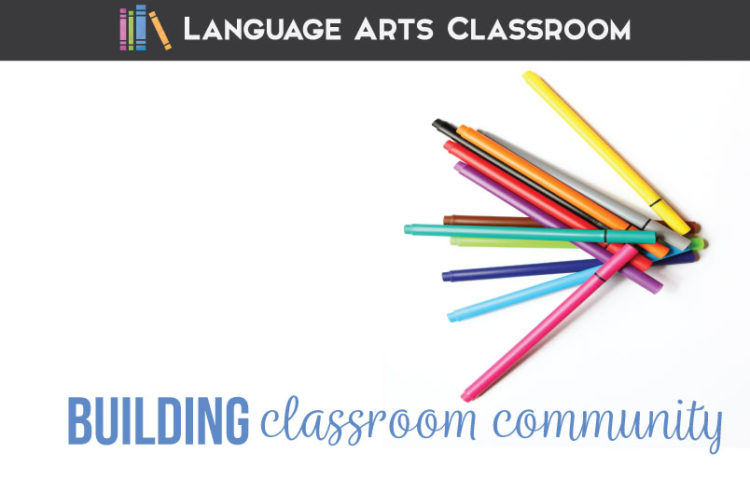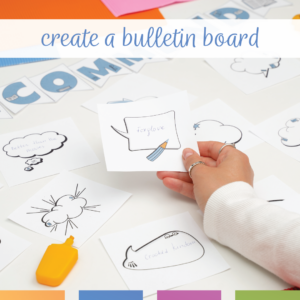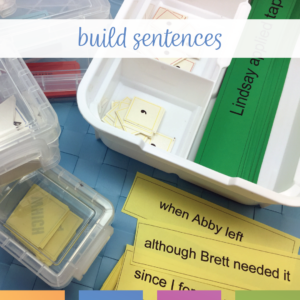My first years of teaching, I will honestly say that classroom community building activities did not make my to-do list. However, creating community in the classroom now takes precedence for me.
Years ago, I don’t believe my classes were miserable. I still treasure relationships and stay in contact with students from those early years. A culture existed, but I did not conscientiously cultivate it. I didn’t question how to build a classroom community.
I felt classroom management, meeting standards, and surviving personally needed my focus. Those first years can be brutal for a teacher. While reflecting years later, I often think that many of those problems I wanted to prevent would have lessened with more of a classroom community.
Now that years have passed, I consciously think of how to build classroom community. In fact, I reflect on building classroom community and modify my practices throughout the school year.
What sort of classroom community building activities are there?
Ten years into teaching, I build a classroom community with purpose. Here are four goals I want to achieve in my high school classroom, and how I implement them to build classroom community. Activities stem from those goals.
One: Bullying.
I take a hard stance with bullying. My message to students: everyone is different, not everyone has to like everyone, but we all must be respectful. A positive classroom community will not include bullying.
Outlining expectations and providing examples establishes the non-bullying classroom community. When I witness mean or excluding behavior, I say something. High school students have a very sneaky way of bullying. It’s normally followed by, “I was just kidding” or “so-and-so knows I’m just joking.” Address this talk with the speaker so that others know you take bullying seriously.
Part of building a classroom community where students feel safe is to address bullying every time.

Two: Gossiping.
I don’t gossip with students. I think the stereotypical high school teachers who knows who is dating, who went to a party is being put to rest. (Thankfully.) Still, I take extra precaution not to gossip about my coworkers (or anything that could be construed that way) or other students. Part of feeling safe in a classroom is not worrying that the teacher talks about you to others.
Creating community in the classroom requires thinking about students’ interpretation of your actions. They shouldn’t worry the next person who walks in will be maligned.
If students try to engage me in gossip, I say something like, “I don’t like it when people talk about me, so I don’t talk about others.” Often, the modeling you give students provides the expectation, and this will build your classroom community.
Three: Kindness.
Building a classroom community should naturally include kindness. Sure, this includes not cheating, not criticizing answers or ideas, but I make it a bit more. I define kindness as simply extending courtesy and care to others, but it should include social niceties. A positive classroom community will reflect what students hopefully see when they are adults.
“Being on” is the hardest part of teaching for me. Extending grace, kindness—while teaching and modeling? Exhausting. Still, modeling this kindness builds a classroom community.
Sometimes I worry that I go over the top, but then I remember: some students have no model of kindness at home. I’m the model. Plus, part of building a classroom community involves social-emotional learning, and the teacher must model healthy behavior like kindness.
Four: Dedication to learning.
I’ve found this to be the most difficult trait of classroom community to establish. Older students enter the room with at least nine years of schooling experience, messages from media and home, and semi-established beliefs. I honestly feel that with high school students, teachers have only a few moments to show their students that learning can lead to a greater life.
A dedication to learning is an important part of creating community in the classroom. I stress that I love to learn, that it is ok not to know everything, and that learning is a never-ending process.
Additionally, I show students how I work through difficult concepts. When I can, students and I discuss metacognition and application to their lives.
Still, older students have to get over their “coolness” that protects them in the world of high school. Make it the norm. Everyone owns their learning – learning and experimenting is the norm in your classroom. Students want to belong and if that is the standard, they will strive for it.
By the end of the semester, I want to be able to say to each class:
You are my kids, and I know that you know we behave in a certain way.
My students know what that means. I’ve provided examples, correct behavior, and modeled expectations for a strong classroom community. Being “on” as a teacher exhausts all of us. The modeling aspect has been the number one change in my classroom community, however.
Do you need more? More concrete activities? To continue building connections, try some of these high school classroom community building activities.
Potential Activities
Working with older students, I am uncomfortable with forced team building. Some coaches and teachers do great with a jump rope, pipe cleaners, an obstacle course, and a hula hoop. A human knot or human pretzel. . . tons of fun activities exist. Personally, I’m an introvert and am uncomfortable leading such team building activities.
Still, activities can require communication skills and creative thinking while being a great way to build a community. Here are activities.
Cookie writing.
During the first days of school, my classes and I review the writing process with cookies. Reviewing the writing process in unique and different ways can engage young writers to consider writing as a fun activity, not a chore.
This activity not only reinforces the writing process but also adds a touch of excitement by using cookies as a delicious incentive. During the first days of school, brainstorm with your class about all of the cookies they enjoy—the prewriting. Once you have a long list, discuss how writers would narrow down a topic for a narrative, expository, or argumentative paper. Examples:
- Narrative: time you made oatmeal cookies with Grandma
- Argumentative: cookie alternatives
- Expository: history of chocolate chip cookies
A common thread in discussions should be that many of the topics could be turned into books, and indeed, books exist about cookies! For a paper, students will need to consider the audience and requirements for the assignment. Use this fun opportunity to outline the writing process and then as students compose a draft in groups, bring in cookies.
Genre and recommendation bulletin board.
One such activity is the genre bulletin board. It serves the dual purpose of introducing students to various genres of literature and creating a visually appealing classroom display. Simply make copies of different book covers representing various genres, grab some colored pencils, and distribute a slip of paper to each student. Ask them to choose a book to recommend, explain the recommendation, and color the slip.
Then, hang the recommendations! Creating a class bulletin board based on reading goes a long way in building a classroom community of readers and respect. A bulletin board also serves as a visual reminder of the shared love for books and reading within the classroom. It sparks conversations, encourages students to explore different genres, and fosters a sense of community.
I constantly look for ways to introduce books to my classes. Finally, introducing a beloved book can serve as a slow icebreaker activity.
Sentence building.
Hands-on grammar manipulatives are simply the most interactive piece for grammar. They literally are building blocks where each learner can build sentences. (Often, teachers glue the word pieces onto old Jenga blocks.)
Practice where classes need reinforcement:
- Comma placement.
- Phrase and clause use.
- Conjunctions.
These pieces work well in small groups or for individuals. Furthermore, this project can be a great way to create a sense of unity among students. Assign a task that requires them to work together towards a common goal, such as creating the goofiest sentence or the longest sentence with correct punctuation. This will not only improve their teamwork abilities but also strengthen the bond between classmates.
Coloring.
From younger students to 12th grade students, everyone enjoys coloring. And? A little bit with low-stress pages can build community. To introduce or review literary devices, color, add notes, and create examples. Color bookmarks and for independent reading books.
At the end of the day, let students keep their creations or compile them for others to take.
Overall classroom community building activities.
So? You can do this too. Think of three or four traits you would like to see in your classroom. Feel free to steal mine. Then, think of ways to establish them—simple and practical ways. Use my activities or create your own!
You’ll be on the road to building a classroom community with high school students and in the process, bettering your classroom management. A positive classroom community can be yours!
Are you looking for other ideas for how to build classroom community? Check out my Pinterest boards, full of ideas from around the web.





